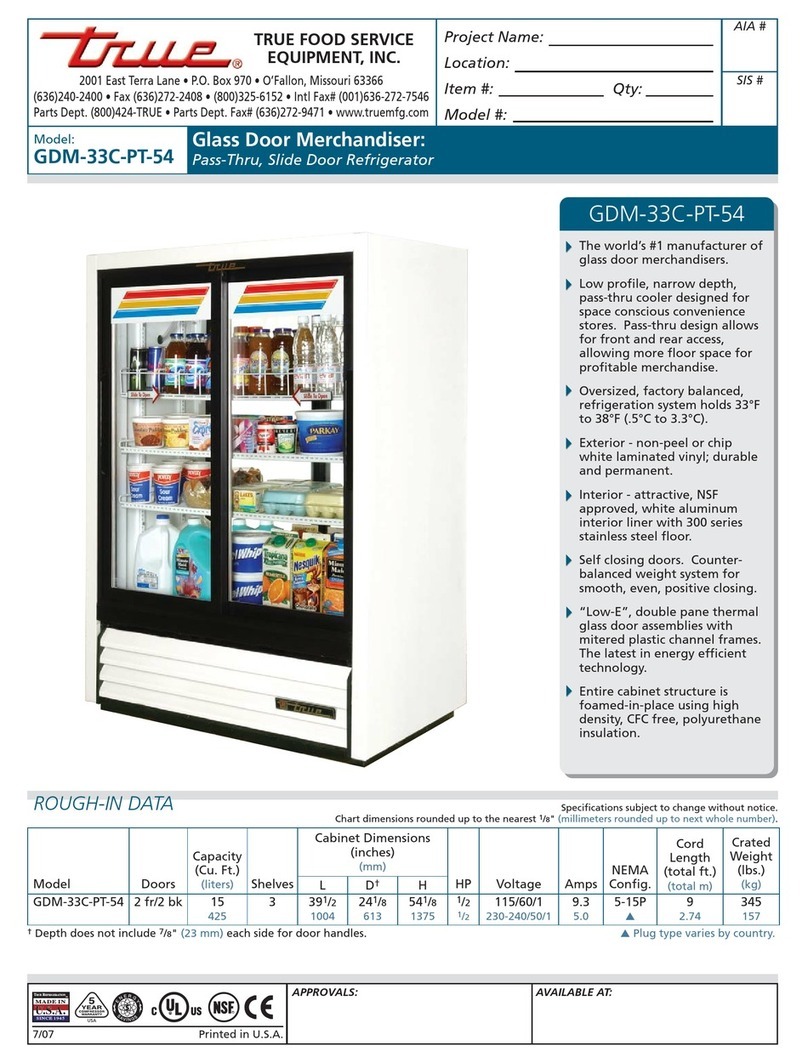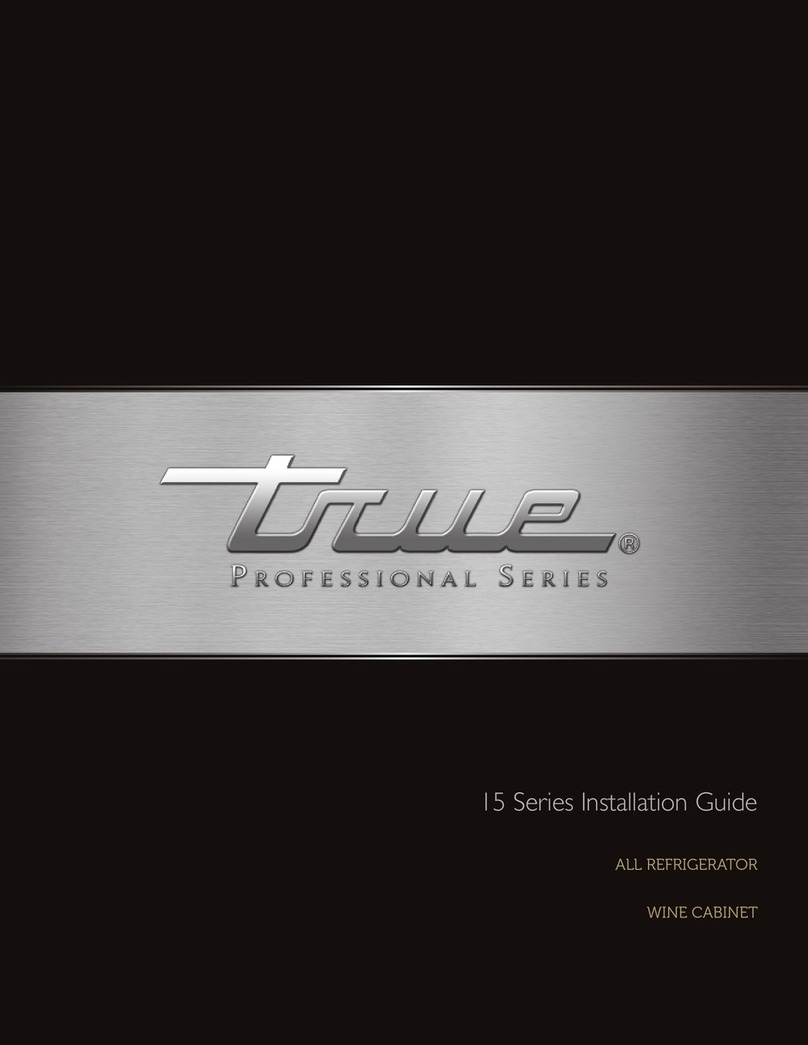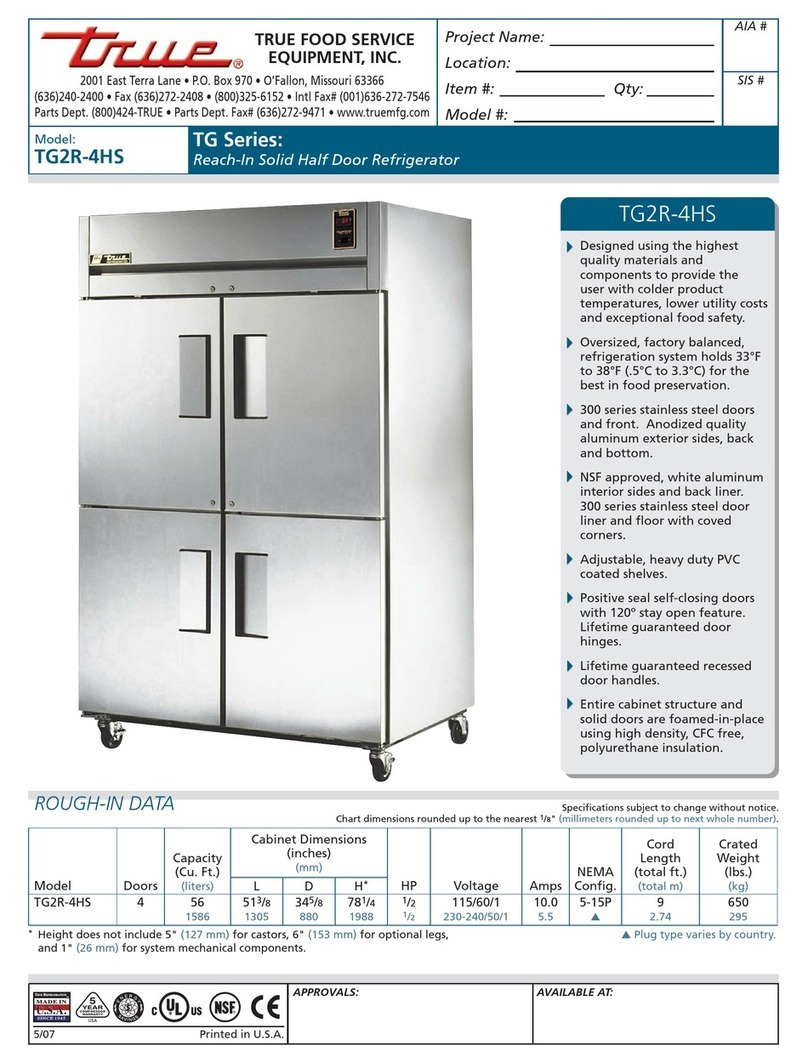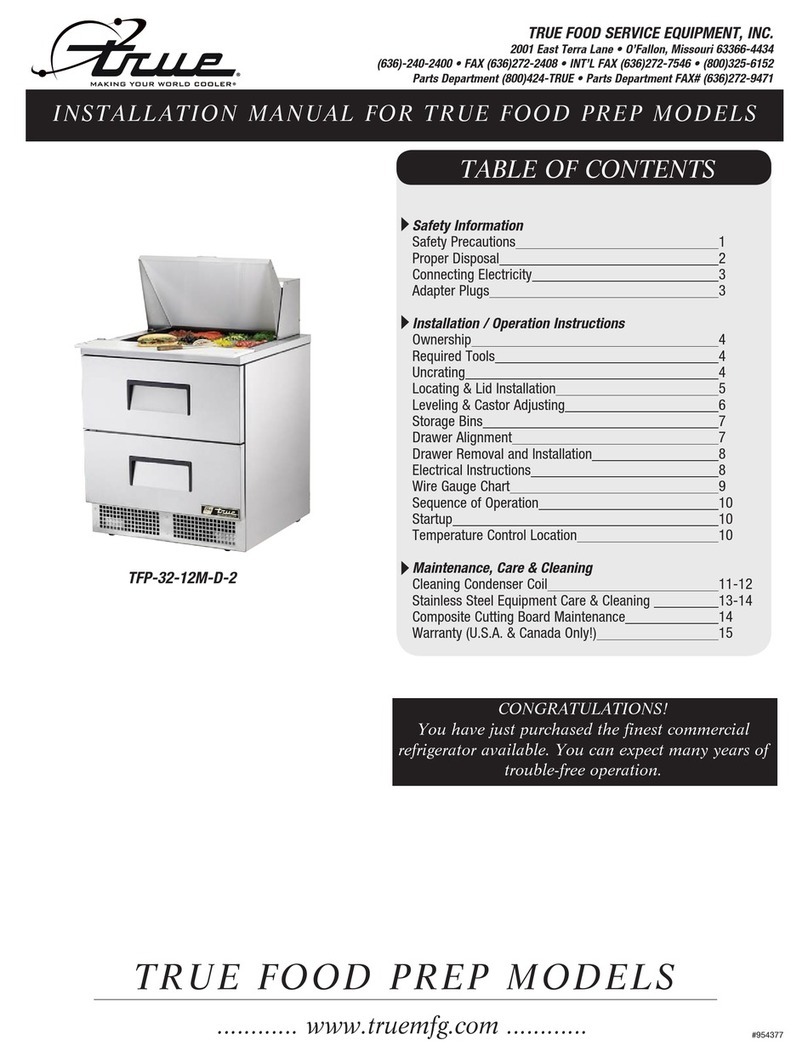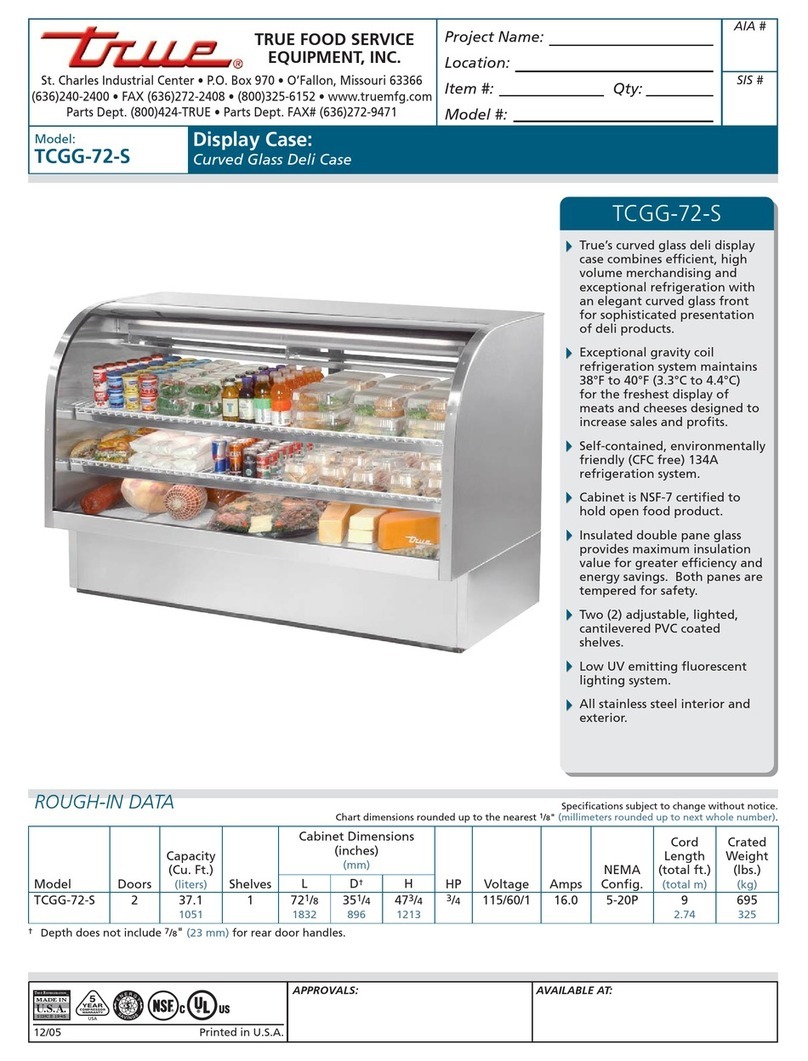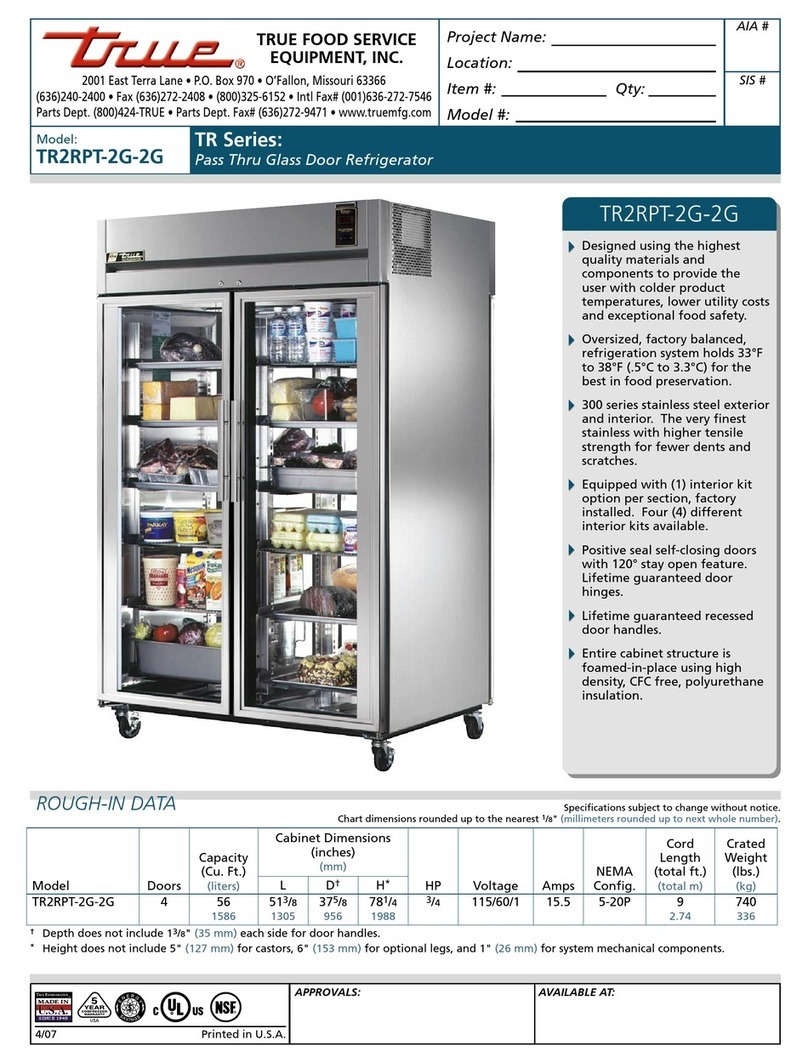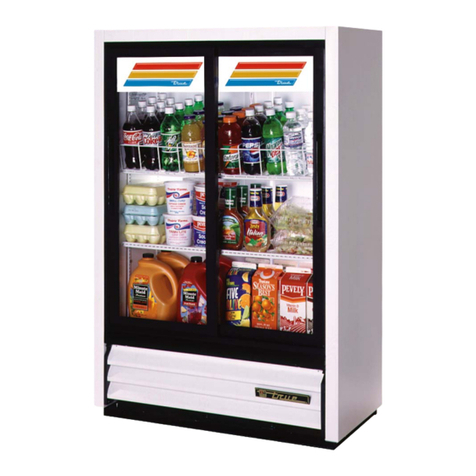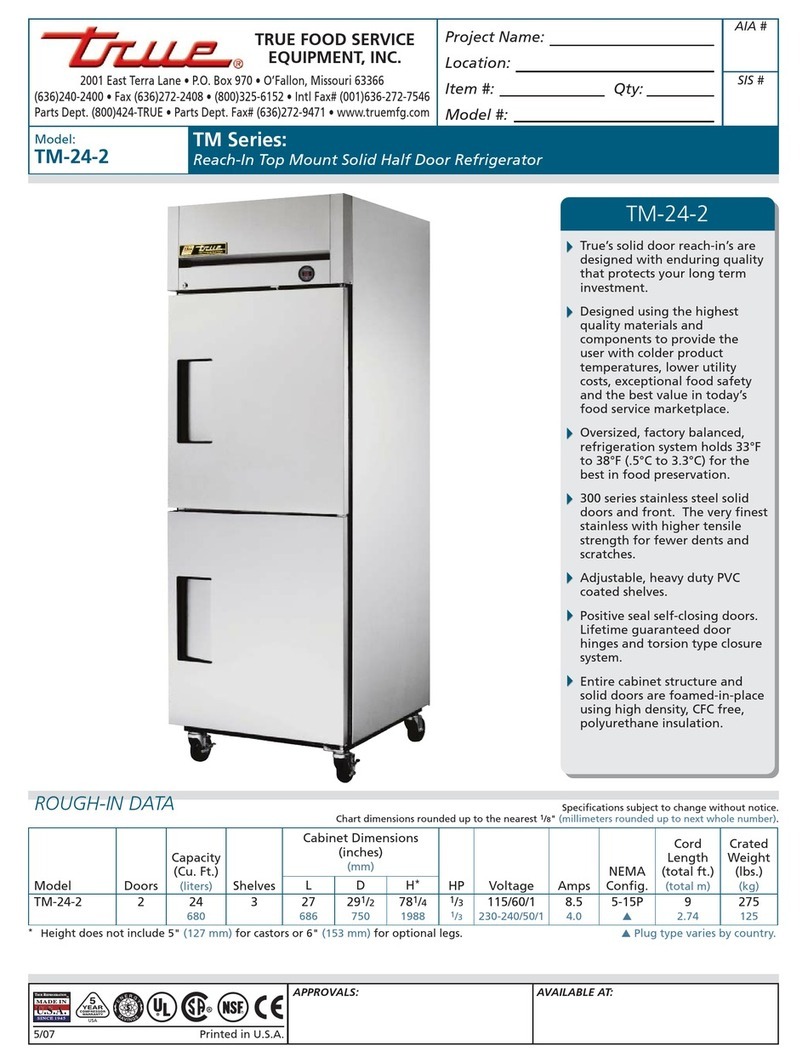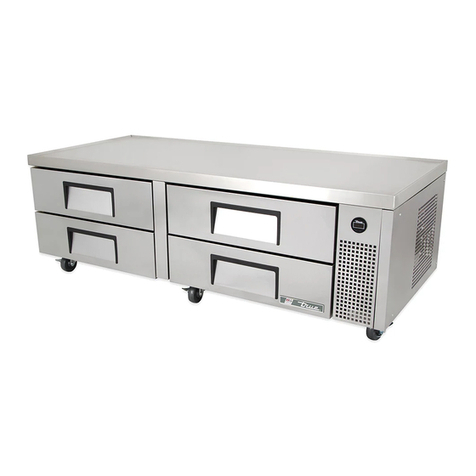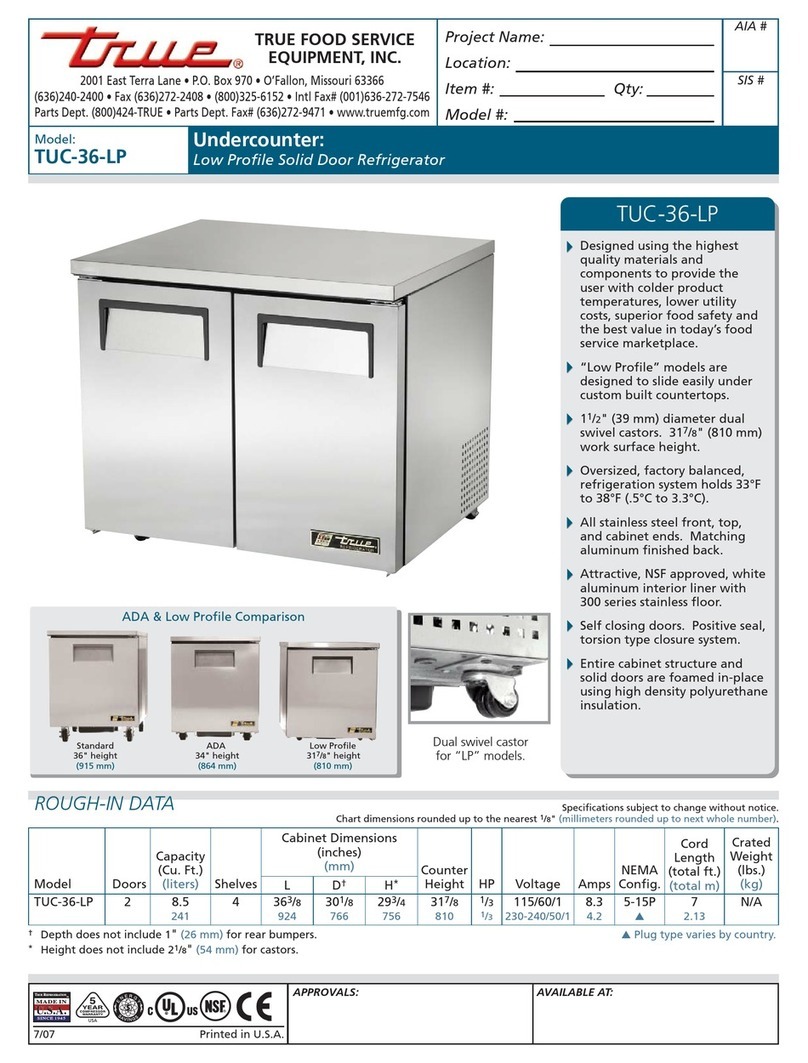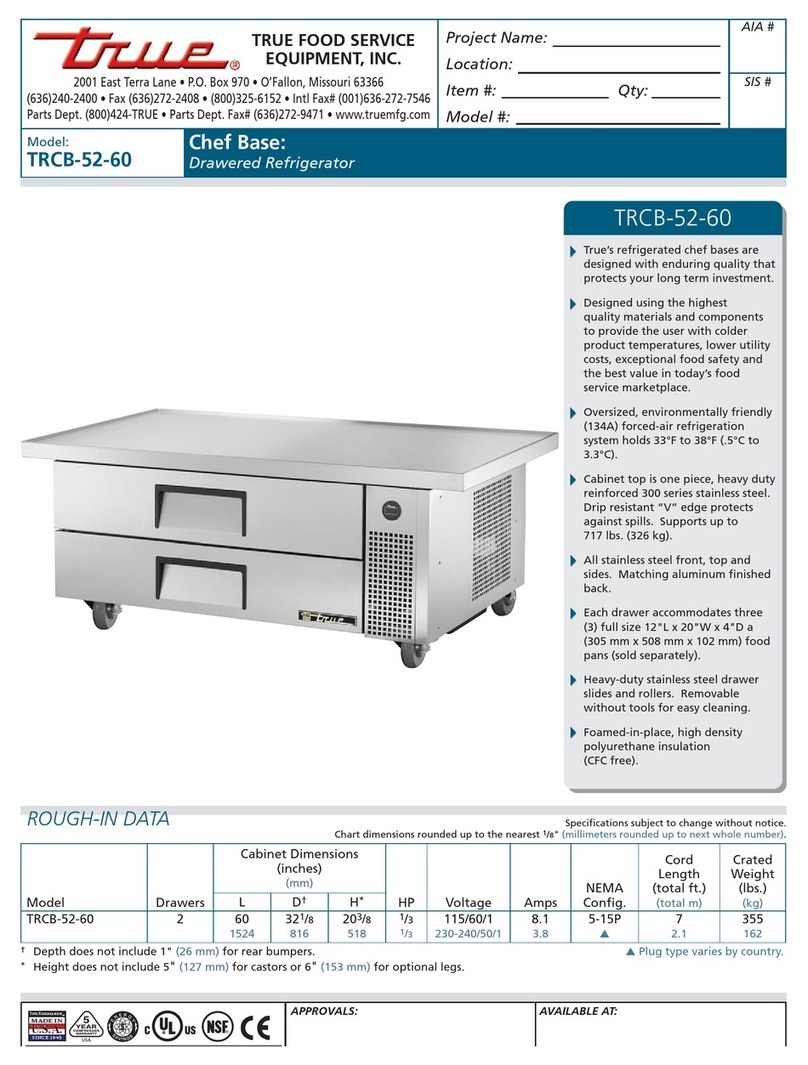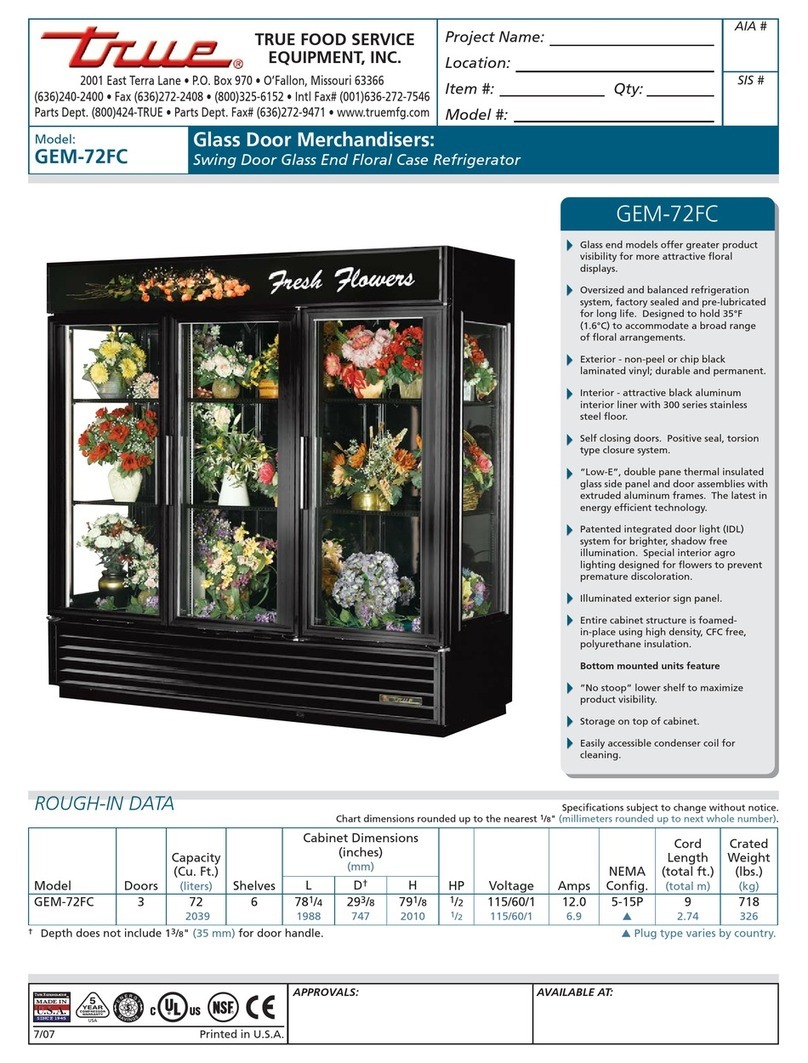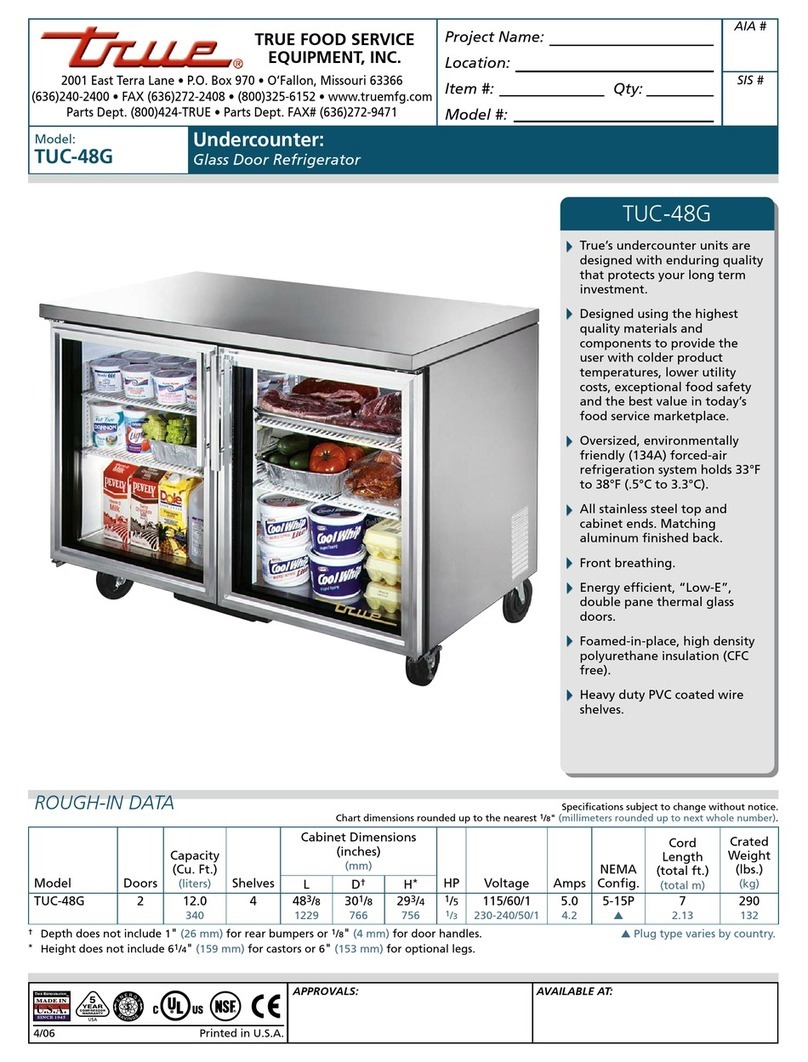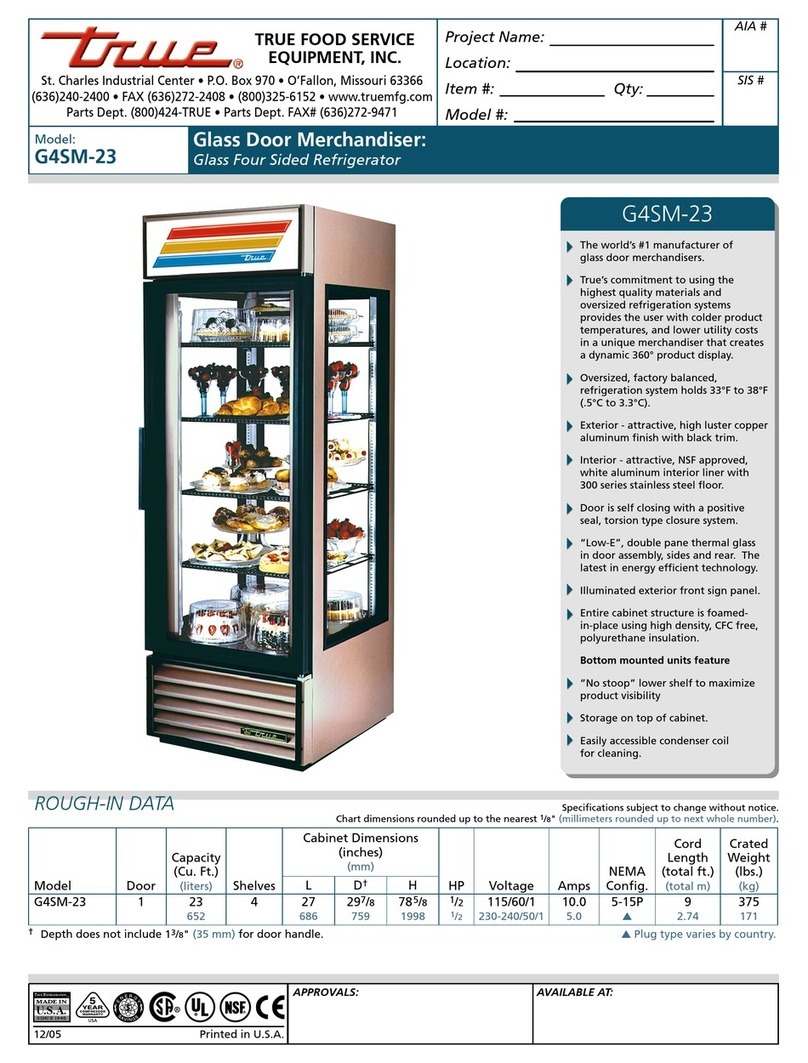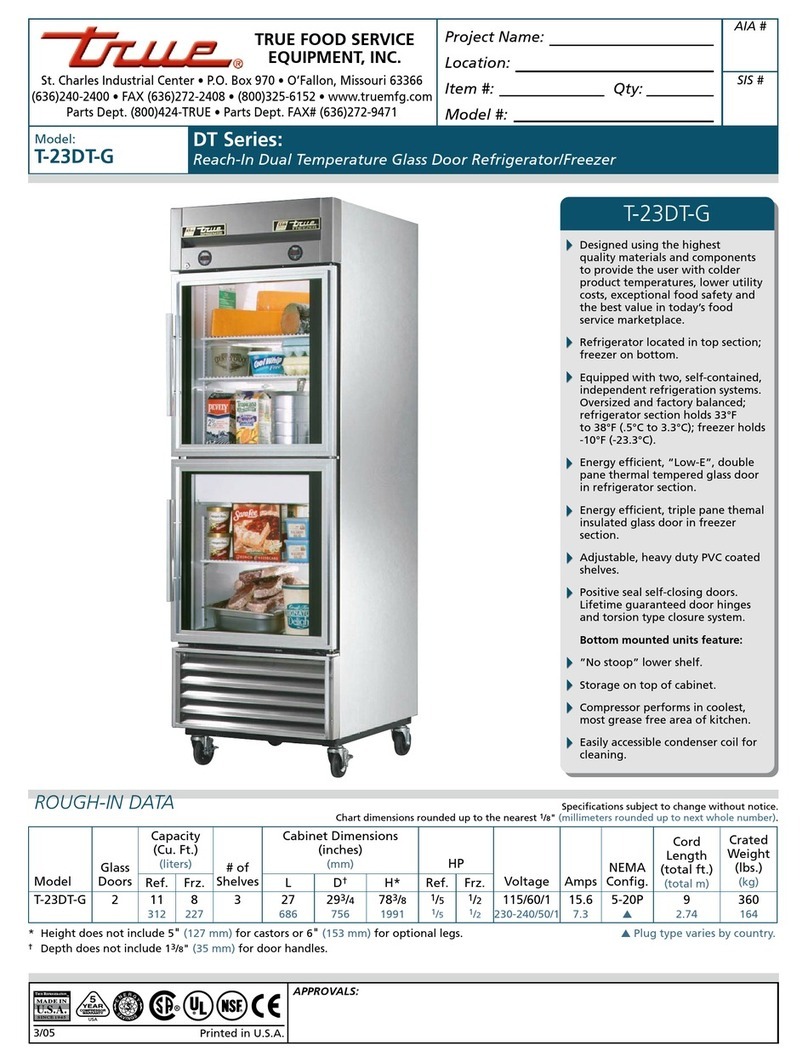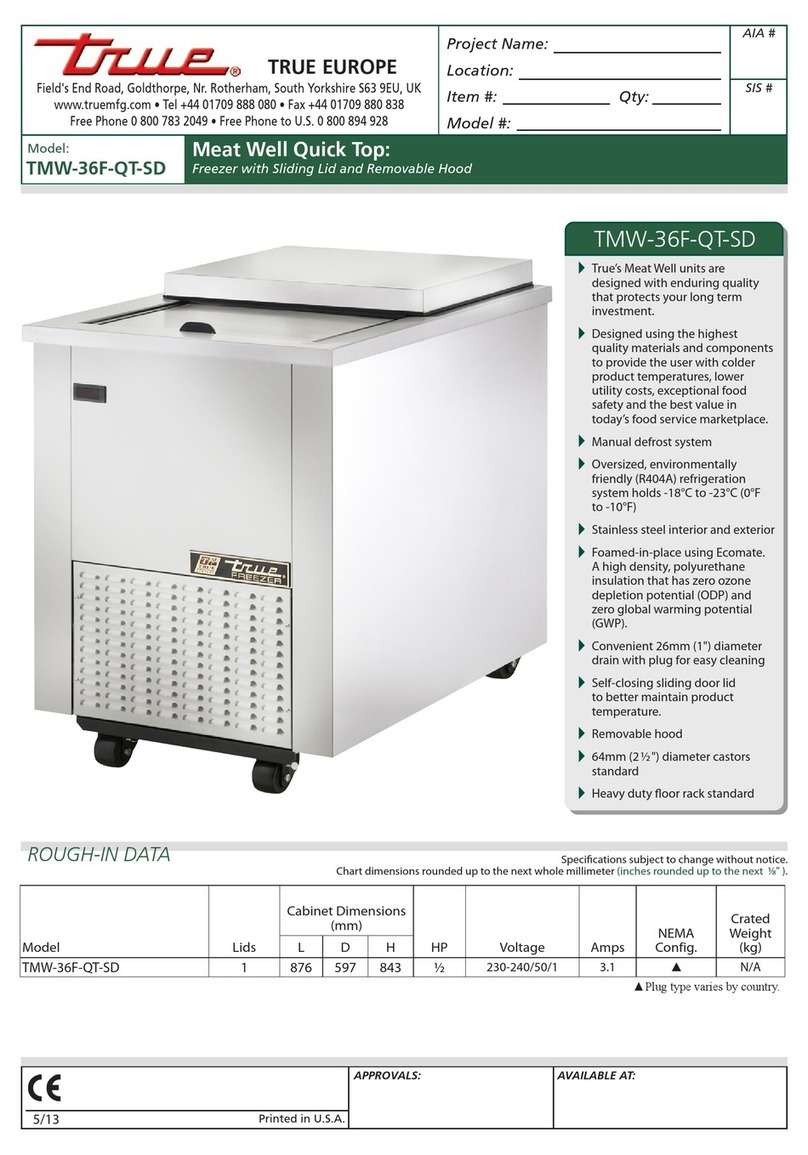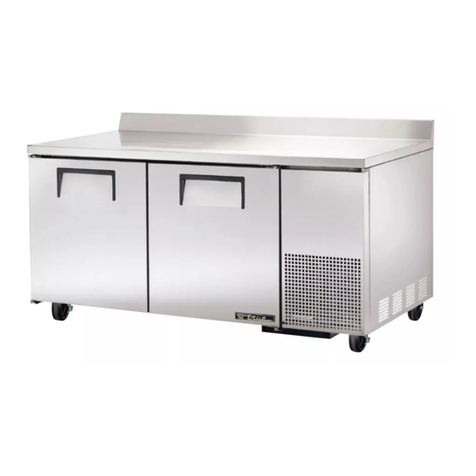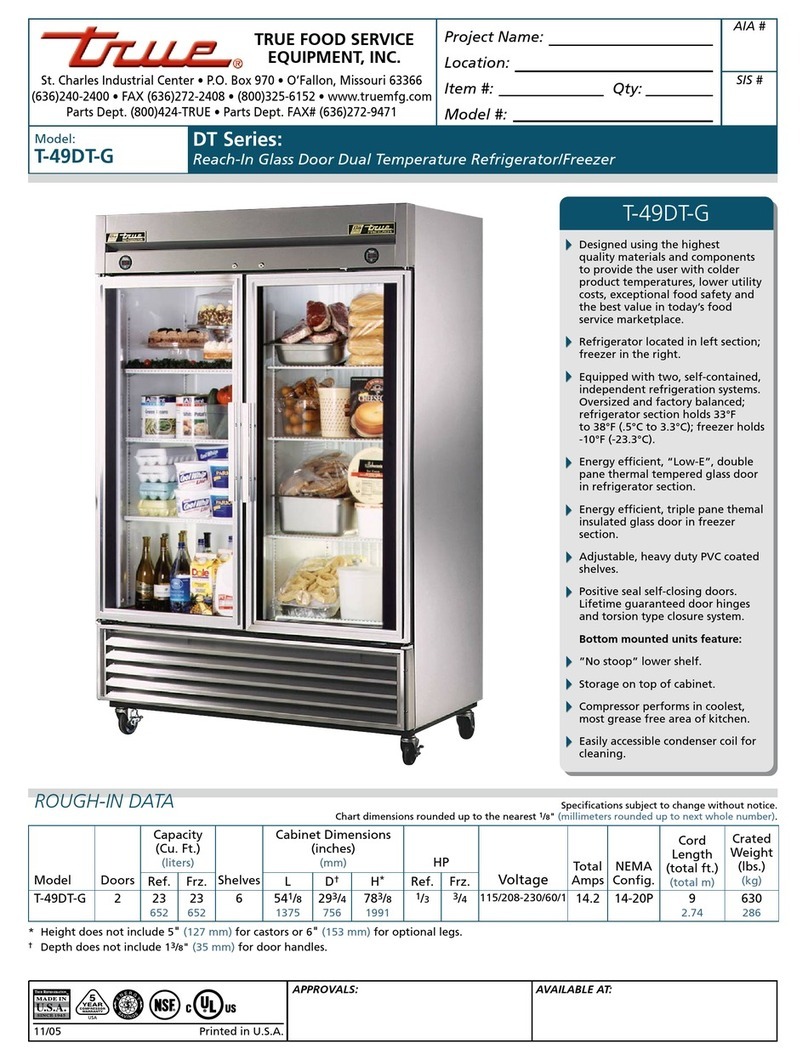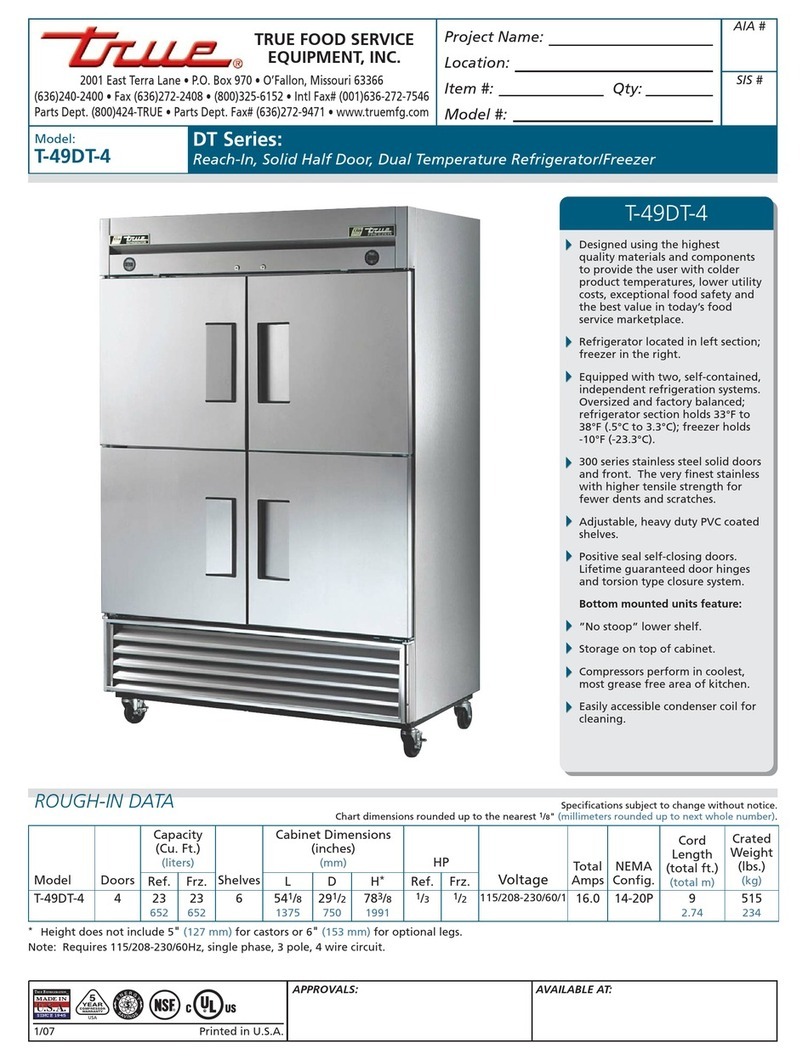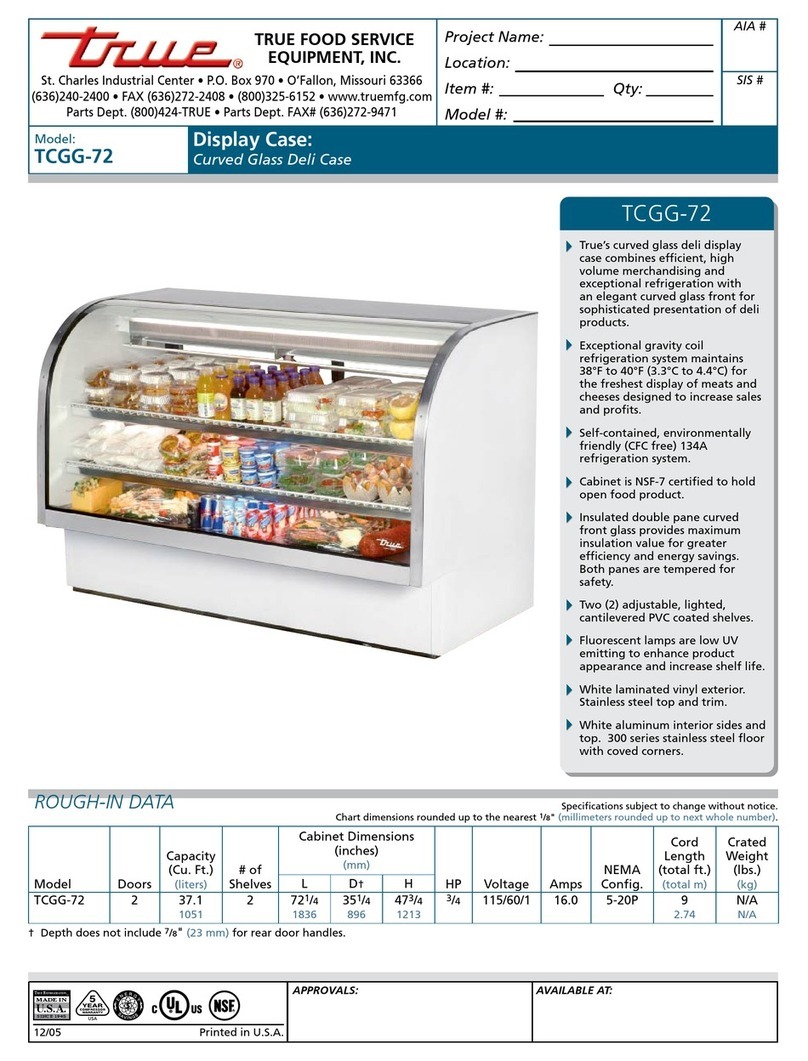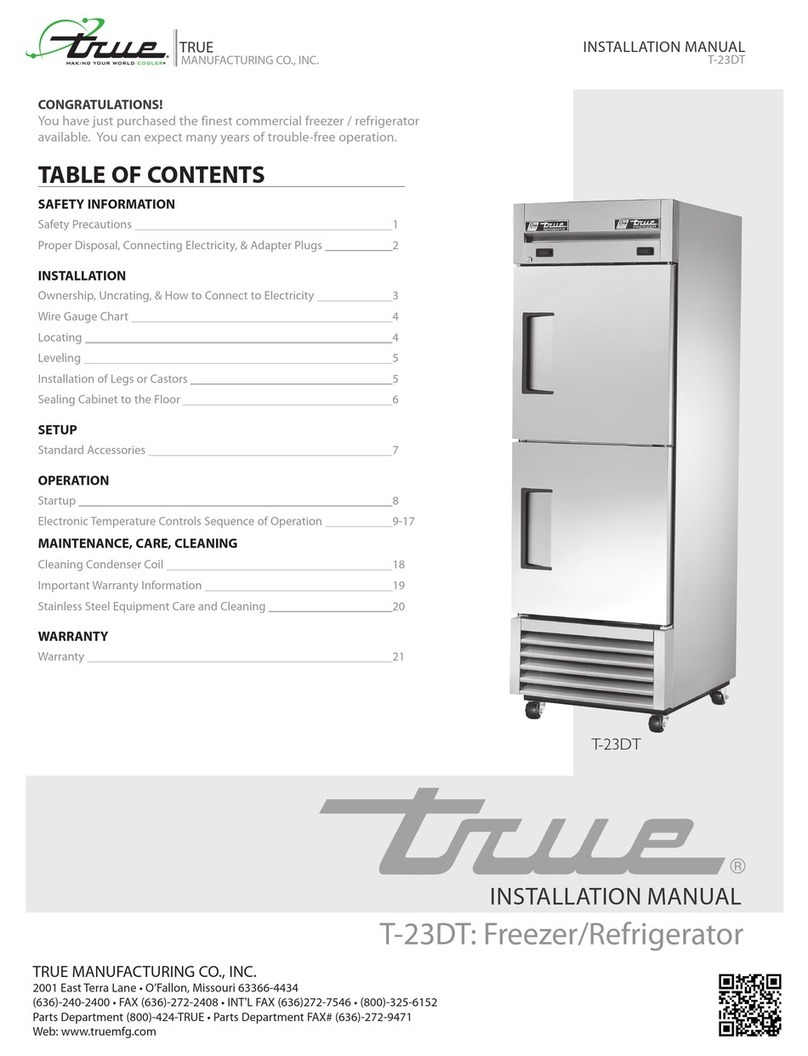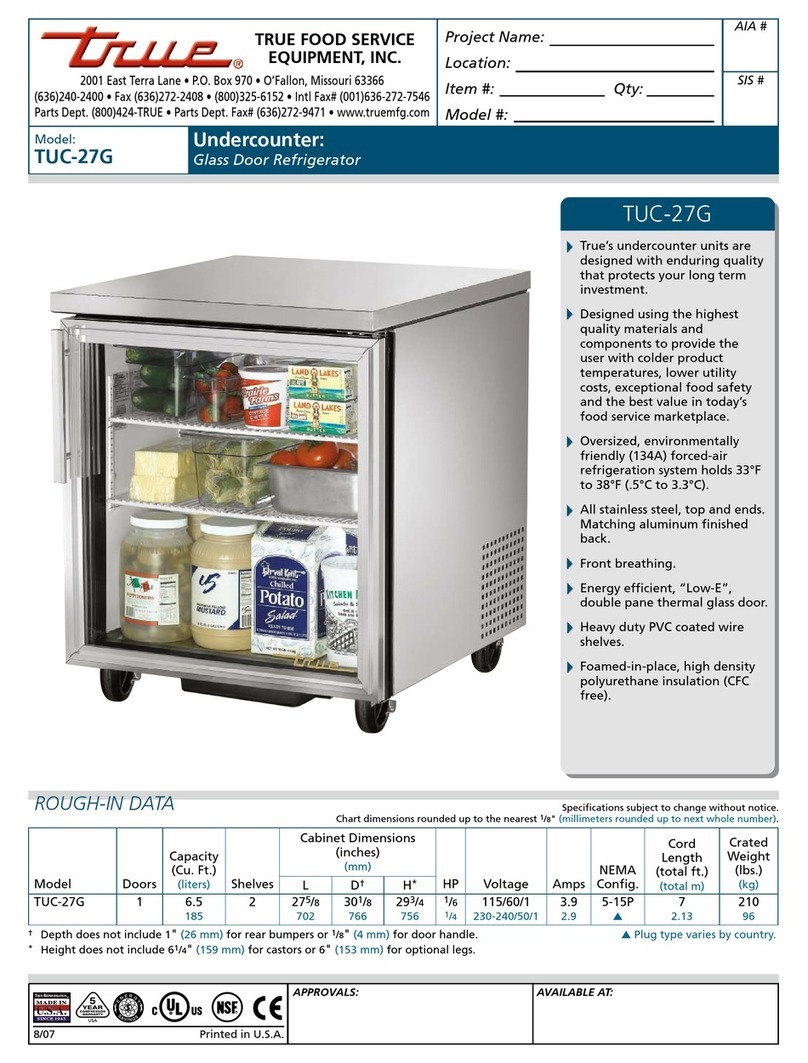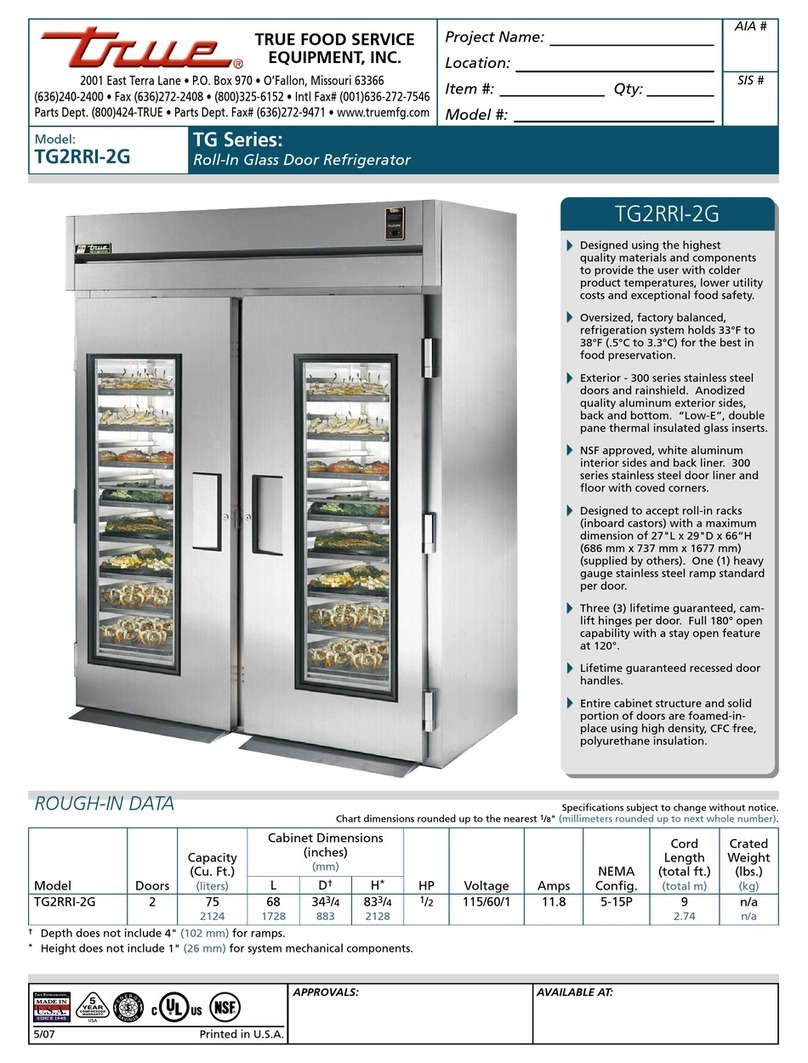
4
TRUE
SPEC SERIES®: STR, STA & STG, ROLL-IN AND ROLL-THROUGH www.truemfg.com
4
230 Volts Distance In Feet To Center of Load
Amps 20 30 40 50 60 70 80 90 100 120 140 160
5 14 14 14 14 14 14 14 14 14 14 14 14
6 14 14 14 14 14 14 14 14 14 14 14 12
7 14 14 14 14 14 14 14 14 14 14 12 12
8 14 14 14 14 14 14 14 14 14 12 12 12
9 14 14 14 14 14 14 14 14 12 12 12 10
10 14 14 14 14 14 14 14 12 12 12 10 10
12 14 14 14 14 14 14 12 12 12 10 10 10
14 14 14 14 14 14 12 12 12 10 10 10 8
16 14 14 14 14 12 12 12 10 10 10 8 8
18 14 14 14 12 12 12 10 10 10 8 8 8
20 14 14 14 12 10 10 10 10 10 8 8 8
25 14 14 12 12 10 10 10 10 8 8 6 6
30 14 12 12 10 10 10 8 8 8 6 6 6
35 14 12 10 10 10 8 8 8 8 6 6 5
40 14 12 10 10 8 8 8 6 6 6 5 5
50 12 10 10 8 6 6 6 6 6 5 4 4
60 12 10 8 6 6 6 6 6 5 4 4 3
70 10 10 8 6 6 6 5 5 4 4 2 2
80 10 8 8 6 6 5 5 4 4 3 2 2
90 10 8 6 6 5 5 4 4 3 3 1 1
100 10 8 6 6 5 4 4 3 3 2 1 1
115 Volts Distance In Feet To Center of Load
Amps 20 30 40 50 60 70 80 90 100 120 140 160
2 14 14 14 14 14 14 14 14 14 14 14 14
3 14 14 14 14 14 14 14 14 14 14 14 12
4 14 14 14 14 14 14 14 14 14 12 12 12
5 14 14 14 14 14 14 14 12 12 12 10 10
6 14 14 14 14 14 14 12 12 12 10 10 10
7 14 14 14 14 14 12 12 12 10 10 10 8
8 14 14 14 14 12 12 12 10 10 10 8 8
9 14 14 14 12 12 12 10 10 10 8 8 8
10 14 14 14 12 12 10 10 10 10 8 8 8
12 14 14 12 12 10 10 10 8 8 8 8 6
14 14 14 12 10 10 10 8 8 8 6 6 6
16 14 12 12 10 10 8 8 8 8 6 6 6
18 14 12 10 10 8 8 8 8 8 8 8 5
20 14 12 10 10 8 8 8 6 6 6 5 5
25 12 10 10 8 8 6 6 6 6 5 4 4
30 12 10 8 8 6 6 6 6 5 4 4 3
35 10 10 8 6 6 6 5 5 4 4 3 2
40 10 8 8 6 6 5 5 4 4 3 2 2
45 10 8 6 6 6 5 4 4 3 3 2 1
50 10 8 6 6 5 4 4 3 3 2 1 1
HOW TO CONNECT ELECTRICITY
Do not, under any circumstances, cut or remove the ground prong
from the power cord. For personal safety, this appliance must be
properly grounded.
The power cord of this appliance is equipped with a grounding plug
which mates with a standard grounding wall outlet to minimize the
possibility of electric shock hazard from this appliance. Have the
wall outlet and circuit checked by a qualified electrician to make sure
the outlet is properly grounded. If the outlet is a standard 2-prong
outlet, it is your personal responsibility and obligation to have it replaced
with the properly grounded wall outlet. The unit should always be
plugged into its own individual electrical circuit, which has a voltage
rating that matches the rating plate. This provides the best perfor-
mance and also prevents overloading building wiring circuits which
could cause a fire hazard from overheated wires. Never unplug your
unit by pulling on the power cord. Always grip plug firmly and pull
straight out from the outlet. Repair or replace immediately all power
cords that have become frayed or otherwise damaged. Do not use
a cord that shows cracks or abrasion damage along its length or at
either end. When removing the unit away from the wall, be careful
not to roll over or damage the power cord.
ELECTRIC INSTALLATION & SAFETY
INFORMATION
• If the supply cord is damaged, it must be replaced by a special
cord or assembly available from the manufacturer or its service
agent.
• Lamps must be replaced by identical lamps only.
• Appliance tested according to the climate classes 5 and 7
temperature and relative humidity.
ELECTRICAL INSTRUCTIONS
A. Before your new unit is connected to a power supply, check the
incoming voltage with a voltmeter. If anything less than 100% of
the rated voltage for operation is noted, correct immediately.
B. All units are equipped with a service cord, and must be
powered at proper operating voltage at all times. Refer to
cabinet data plate for this voltage.
TRUE RECOMMENDS THAT A SOLE USE CIRCUIT BE
DEDICATED FOR THE UNIT.
WARNING: Compressor warranties are void if compressor burns
out due to low voltage.
WARNING: Power supply cord ground should not be removed!
WARNING: Do not use electrical appliances inside the food
storage compartments of the appliances unless they are of the type
recommended by the manufacturer.
NOTE: To reference wiring diagram, remove front louvered grill,
wiring diagram is positioned on the inside cabinet wall.
WIRE GAUGE CHART
